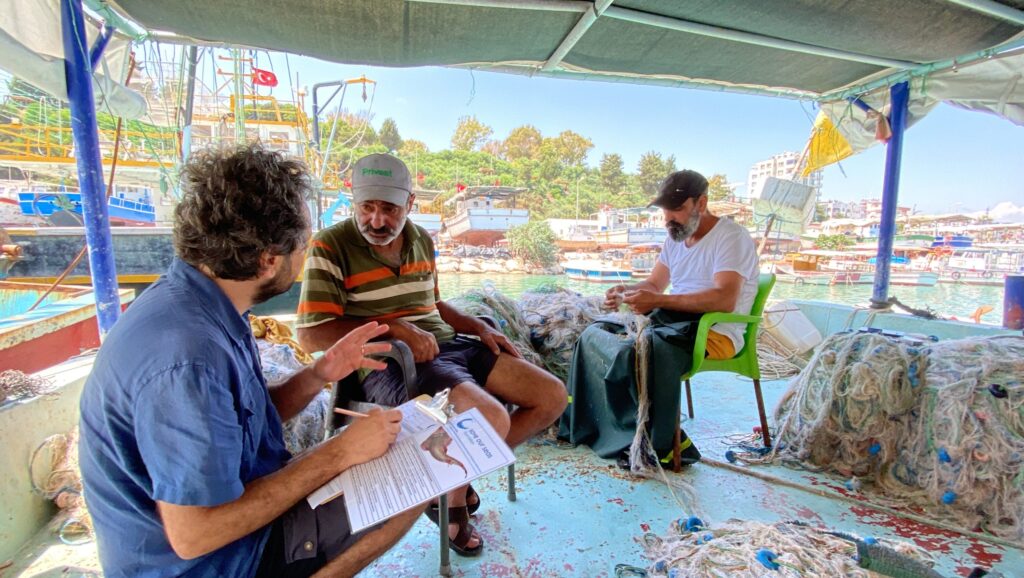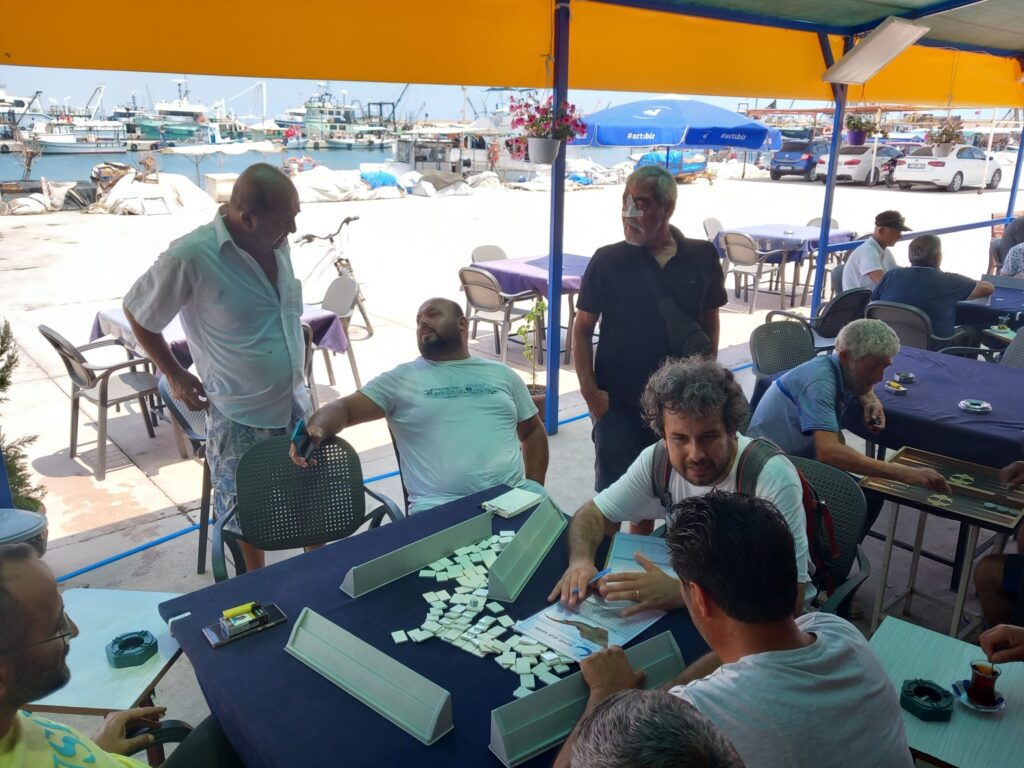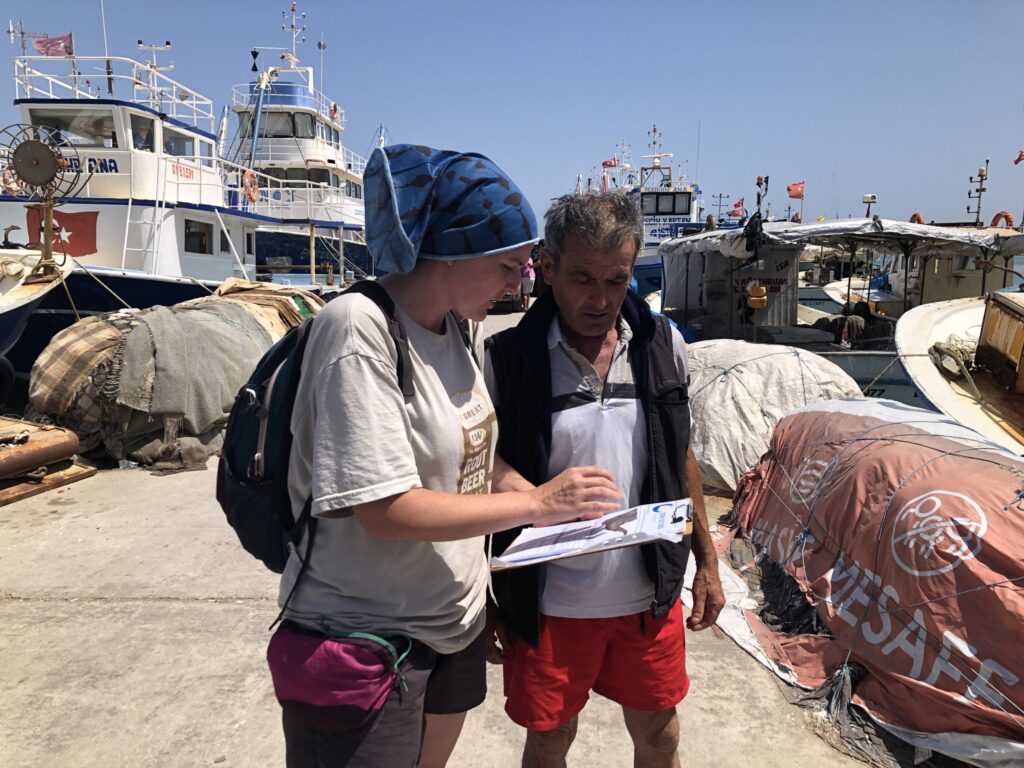Beyond Questions: Building Trust with Fishers
When we began interviewing fishers for this project, our approach was never limited to a set of questions and answers. Over time, by spending long hours in the field, we built trust with the fishers. This trust often turned our interviews into conversations, sometimes even heartfelt discussions, through which they shared stories and knowledge beyond the scope of our initial objectives.

Trust-based conversations with fishers. Photo © Ismet Saygu
This project has allowed us to strengthen the communication channels we established in earlier work. For example, one of the areas frequently highlighted in our interviews and previous blog posts, Karaduvar, has revealed its significance not only for trawl fisheries but also for small-scale coastal fisheries. While our focus has been on the threats posed by trawling, our discussions with fishers revealed that other fishing practices may also represent a source of pressure on guitarfishes in this area.

Sharing experiences with fishers - a key element. Photo © Ismet Saygu
Fishers confirmed that both juvenile and adult guitarfishes are commonly caught here. Even when theyare not the target, the unique nature of the fishing grounds results in many individuals being discarded. In some cases, fishers mentioned that very large guitarfishes are occasionally in demand by public sea aquariums, leading to targeted captures in specific hotspots. This raises further concerns, as it adds to the already high level of pressure on these critically endangered species.
Although landing guitarfishes is officially banned in Türkiye, both our sea surveys and fisher interviews indicate that this regulation is not always followed. While fishers claim to release juveniles, we remain concerned about their survival rates once discarded.
Interestingly, the insights we gathered opened a new line of research that extends beyond our initial project scope. Alongside the threats from trawling, we are now beginning to explore the risks posed by other fishing activities. This shift has already led to the development of new projects, including a TÜBİTAK postdoctoral project under my supervision and a Rufford-funded project led by Elizabeth Grace Bengil, who is one of our team members, both designed to investigate why this region holds such critical value for guitarfishes.

Collecting fishers’ knowledge on site - a cornerstone. Photo © Ismet Saygu
In this way, the SOSF project has done more than answer our original questions. It has sparked new ideas, revealed additional threats, and highlighted the need for more comprehensive studies. Moving forward, we see clearly that further research, resources, and collaboration will be essential, not only to understand these habitats but also to protect them for the future of guitarfishes.
